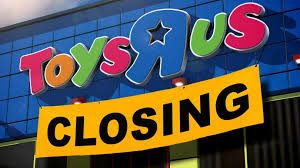
In this article I ask some important questions. Is the world changing and demanding more from businesses faster than they can evolve to meet those demands? On our current path, are we headed for some kind of extinction event that will rock the business world as well as life on earth? Could your business become extinct? If so, how can we avoid that catastrophe?
I’m actually more of an optimist than a doomsdayer. However, I think we would be remiss if we didn’t ask these questions. Let’s start with a look at evolution and how it applies to business.
Extinction Periods
According to Biologists, the extinction of plants and animals tends to come in clusters, which they have named extinction periods. I imagine these periods to be something like stock market corrections. Pressures add up and something has to give. On earth we’re in the sixth extinction period called the Holocene extinction. Unlike the previous periods, this event is attributed largely to human activity on the planet. At an alarming rate, many plant and animal species are not keeping pace with the dramatic changes on earth caused by our human existence. Could the path of business be reflecting this planetary trend?
Evolution in Business
The evolution metaphor actually works quite well in business. We can see in business survival of the fittest, natural selection, and the adaptation of species (businesses) to environments that change and face disruption. Companies able to evolve and adapt more quickly survive and grow, while others die off. You may ask, hasn’t this always been the case? The answer is  Yes, but that’s not the point here. The real question is are we reaching a point where more and more companies simply can’t keep pace with the ballooning external changes and demands? When companies like GE are struggling, which I wrote about in my last article, could it be indicating something akin to an extinction event? If so, what is causing this event and what can we do to avoid it?
Yes, but that’s not the point here. The real question is are we reaching a point where more and more companies simply can’t keep pace with the ballooning external changes and demands? When companies like GE are struggling, which I wrote about in my last article, could it be indicating something akin to an extinction event? If so, what is causing this event and what can we do to avoid it?
I can’t speak with authority about a coming extinction event in business. However, what I do see is a situation where pressures are mounting and something has to give. Business leaders are caught in a difficult conundrum. On the one hand there is the ever present pressure to achieve financial performance targets, incorporate new technology and business models, deal with global competition, and improve products, services and the customer experience. On the other hand most leaders struggle with making change happen. When they step on the gas the car doesn’t go as far or as fast as it needs to go. Moreover, it often doesn’t even go in the right direction.
Something Has to Give
 This situation can’t go on forever. Something has to give. It’s unlikely that the world will slow down its demands. Therefore, if companies can’t make the car go faster, further and in the right direction, they will be unable to adapt to the disruptive business “habitat.” If they can’t adapt, they will become less valuable and relevant. They will eventually die off. If there is anything left after that, the company’s remains will likely be acquired by larger predatory companies for a fraction of what they’re worth. They call that natural selection. It has always occurred in business, but is business failure poised to happen at an increasing rate? Let’s look at some research.
This situation can’t go on forever. Something has to give. It’s unlikely that the world will slow down its demands. Therefore, if companies can’t make the car go faster, further and in the right direction, they will be unable to adapt to the disruptive business “habitat.” If they can’t adapt, they will become less valuable and relevant. They will eventually die off. If there is anything left after that, the company’s remains will likely be acquired by larger predatory companies for a fraction of what they’re worth. They call that natural selection. It has always occurred in business, but is business failure poised to happen at an increasing rate? Let’s look at some research.
Corporate Survival
In a December 2016 article, The Scary Truth About Corporate Survival, Vijay Govindarajan and Anup Srivastava studied all 29,688 companies that listed on U.S. stock markets from 1960 to 2009. They found that longevity is decreasing. “Companies that listed before 1970 had a 92% chance of surviving the next five years, whereas companies that listed from 2000 to 2009 had only a 63% chance…” Thus, the long-term trend for publicly traded companies is that they aren’t surviving as long. But companies aren’t created equal. Which ones are most likely to survive?
In a 2014 Brookings Institution research article, The Other Aging of America: The Increasing Dominance of Older Firms, economists Ian Hathaway and Robert Litan document “a secular increase in the share of economic activity occurring in older firms.” Specifically, “The share of firms aged 16 years or more was 23 percent in 1992, but leaped to 34 percent by 2011—an increase of 50 percent in two decades…it clearly establishes that whatever the reason, it has become increasingly advantageous to be an incumbent, particularly an entrenched one, and less advantageous to be a new entrant.” But when does the power of incumbency run out for larger companies?
It Can Happen to Any Business
 By the end of 2018 we saw long-term incumbents like Sears, Toys”R”Us and General Electric struggling to survive. It seems that, while the advantage incumbents have serves as a strong buffer, it’s not enough to protect them forever from the increasing barrage of external demands. It also appears that incumbency status hasn’t given these companies an enhanced ability to change and adapt to those demands. In conclusion, no company is safe in the current environment. Could your business become extinct?
By the end of 2018 we saw long-term incumbents like Sears, Toys”R”Us and General Electric struggling to survive. It seems that, while the advantage incumbents have serves as a strong buffer, it’s not enough to protect them forever from the increasing barrage of external demands. It also appears that incumbency status hasn’t given these companies an enhanced ability to change and adapt to those demands. In conclusion, no company is safe in the current environment. Could your business become extinct?
What Can Be Done?
Fortunately, there is a way to address the “threat of extinction.” It begins with a simple yet powerful notion. When it comes to a business, internal excellence fuels external success. Indeed, a company’s abilities to adapt, grow, profit and innovate all begin on the inside with how, and how well, the company operates. Most business leaders miss this reality and do the best they can externally with their slow, short-range unwieldy “cars.” It’s time to fix the car.
What we need most in companies to make them sporty and responsive is an ability to create alignment. This alignment needs to focus on the important things the company does for customers and itself. There are many manifestations of this concept that I cover thoroughly in my book. For this article, however, the concept of alignment is most important. Simply stated, for most things you want to accomplish in a business, you can succeed if you align the involved people, organizational and operational mechanisms and energy around the business goal. Work either happens or it doesn’t happen. It is either efficient or laborious. If you pave the way for alignment, much can happen.
What Gets In The Way?
The short answer is that there are many things that get in the way of building alignment around important work and change initiatives. Most of those things become possible because managers and leaders lack sufficient visibility to see and understand how things work in their companies – and how things don’t work. They use traditional management practices that had their genesis during the First Industrial Revolution when business was simple and work was quite visible. Now work, which is increasingly knowledge work, is largely invisible, as is the way businesses and people really operate. Managers practice what I call surface level management while a majority of the internal workings of their businesses lie hidden beneath the surface – until now.
By learning to read the indicators of energy in a business we gain deep visibility into how things work, and how to make them work better. We clearly see the obstacles to building alignment around important work and change efforts. We are able to harness the power of energy, steer the business where it needs to go, and adapt it to the increasing demands of the external marketplace. Instead of facing extinction, we have an option to survive and thrive.
Two Choices
So where does that leave us? I would say it leaves businesses with two choices. First, you can roll the dice, stay on your current path, and see if you get lucky – not recommended. Second, you can change the way your business operates so it has the ability to change, adapt and thrive. But you can’t get there with traditional management practices. You’ll have to do some things differently. You’ll have to harness the power of energy in your business. Read all about it in my upcoming book. Or give us a call and we can talk about how it could work in your business.
